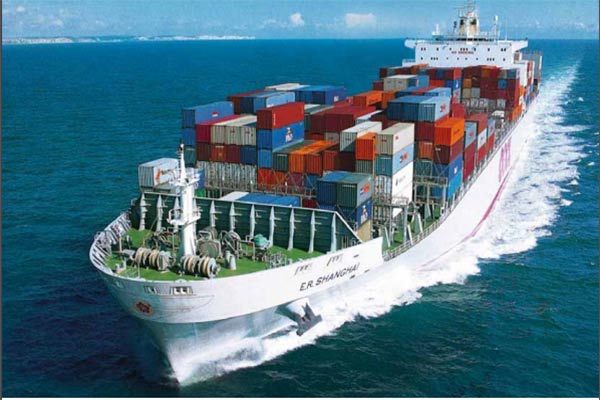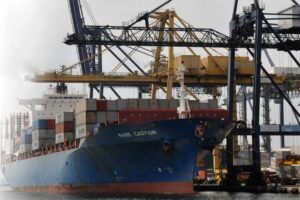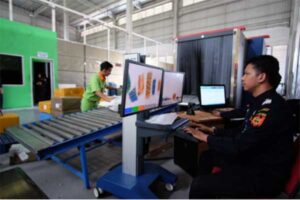
The port condition is a portrait of a country’s economy. There is the gate for world logistic. It takes concrete steps in developing it. Solution is in sight, but are we ready to do it?
The World Bank recently issued a Logistics Performance Index (LPI) report in each country. The report periodically published based on the results of surveys of the logistics professionals in the countries of operations. LPI 2016 was conducted in 160 countries based on six dimensions, namely the efficiency of customs and border management clearance, quality of trading infrastructure and transportation, ease of setting up international shipments, competence and quality of logistics services, ability to perform tracking & tracing, and frequency of on time delivery (timeliness).
LPI score for Indonesia decreased in almost all dimensions, except for international shipment and tracking & tracing. Among the six dimensions of LPI Indonesia in 2016, the three dimensions namely competence and quality of logistics services, tracking & tracing, and timeliness scored above 3. Three other dimensions namely customs, infrastructure, and international shipments scored below 3.
LPI 2016 put Germany in first place with a score of 4.23. Meanwhile among ASEAN countries, Indonesia is in fourth position. Singapore sits on the highest rank (rank 5), followed by Malaysia (32), Thailand (45), Indonesia (63), Vietnam (64), Brunei Darussalam (70), Philippines (71), Cambodia (73), Myanmar (113) and Laos (152). LPI does not indicate explicitly logistics conditions of a country, including logistics costs; however, LPI can describe the level of efficiency and effectiveness of the logistics sector, especially in the movement of goods
One of the dimensions that shall be the concern of Indonesia is infrastructure which has the lowest score with 2.65. The condition of Indonesia’s infrastructure according to Global Competitiveness Report 2014- 2015 released by the World Economic Forum can be compared to Malaysia. Overall, Indonesian Infrastructure was in 72nd position with score 4,2, while Malaysia was in 20th position with score of 5.6. Logistics cost in Indonesia was also quite high up to 24 percent of Gross Domestic Product (GDP)
Apparently, logistic system in Indonesia still faces obstacles to the smooth distribution of goods and services. The cost to be borne is still high and takes long delivery times. This will certainly add the cost for the company so the selling price will be higher to cover the cost of logistics
The causes of the high cost of logistics Indonesia are because of the inadequacy of information and communication technologies for monitoring the flow of goods in the various areas; the procurement of truck and ship that still subject to high tax; logistic regulation that is not integrated between central and local government, so there is still a levy imposed by local government; lack of human resource in logistics matters; and the usage of infeasible used transportation.
According to the World Bank, Indonesia’s logistic cost is the highest in Southeast Asia, while Indonesia has limited budget for infrastructure development. In 2015, it was only allocated for 5 percent of GDP, even in previous years it was only allocated for 2-3 percent of the total GDP. Then the road transport is the largest contributor to the high logistic cost in Indonesia that is 66.8 percent and the rest are administrative costs including the cost of inventory handling, cost of loading and unloading of goods, parking, as well as extortion. This will have a negative impact to the implementation of ASEAN single market and the global market in 2020. The viable transportation support will boost economic growth. Infrastructure development can contribute to economic growth of seven percent of the national Indonesia
Strategy to Improve Logistics Competitiveness
Among various aspects of the World Bank ratings in LPI 2016, generally customs, infrastructure, international shipments, logistics competence and tracking system of goods, except timeliness, show the progress
In ASEAN region, Thailand’s position in LPI 2016 is relatively better compare to Indonesia. This is because geographically, Thailand is inland, while Indonesia is a maritime and archipelagic country so that the logistics cost is higher, therefore the function of warehouse is important. An integrated warehouse is needed such as Bonded Warehouse (GB) and Bonded Logistic Center (PLB).
The warehouse is expected to connect electronically to facilitate monitoring of the availability of goods. It is important for supply chain management in order to avoid gaps in the warehouse which can lead to a rise in price due to the imbalance of supply and demand of goods. Not all warehouses are equipped with Warehouse Management System (WMS) that manages the data inventory. Employers still also complain about the high cost of clearance service handling and warehousing services
In general, to increase the competitiveness of Indonesia’s infrastructure, Medium Term Development Plan (Plan) 2015-2019 is expected to address the infrastructure crisis. Targets to be achieved are the construction of 10 new container ports, the revitalization of the port which functioned as an international hub, among others Port of Belawan; Makassar; Sorong; Tanjung Priok; Tanjung Perak; and Bitung. The development of 76 pacer route, construction of new roads as far as 2000 km, development of special airport for goods, the construction of 10 new industrial parks, construction and modernization of 5000 traditional market (target: 1000 market per year), as well as the development of bank infrastructure.
Then it will be the construction of integrated short sea shipping (Costal Shipping), development of adequate road; the use of train as the primary transportation; railway construction in Sumatra, Kalimantan, Sulawesi, and Papua; and development of International Hub Port of Kuala Tanjung and Bitung. Those are steps of government in improving the logistics system in Indonesia in order to compete with other countries.
The government established 24 ports as connectors for marine toll lanes. The government also plans to build 47 ports and 41 noncommercial ports until 2019. Based on the calculation of National Development Planning Agency (Bapennas), it will spend up to Rp 700 trillion.
With the Sea Toll, the government claimed, the outer regions of Indonesia now have an adequate supply of raw materials, for example, Anambas Islands in Riau Islands. In the past, this area had ever faced three months without eggs stock because of bad weather. Sea toll makes the supply of raw materials to Anambas met using larger transport vessels so that it can face the bad weather.
The National Logistics Performance – Temporaktif






